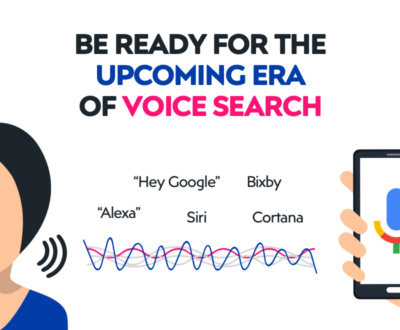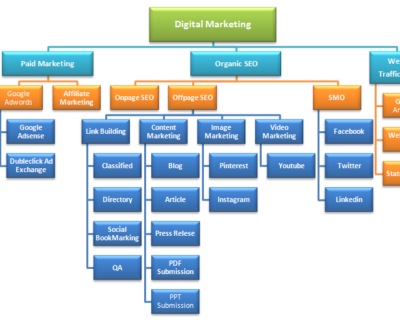Major Issues You Must Consider For Mobile SEO
Mobile SEO aims to optimize website search engines, accompanied by flawless browsing on mobile devices such as smartphones and tablets. With the growing advancement of portable devices, webmasters need to be very interested in their mobile SEO plan. After all, more than 50% of internet users now report surfing websites on their mobile devices every day. Google is already a popular mobile-optimized website.
Based on my experience with various mobile SEO projects, I have created this detailed mobile SEO guide. I hope this helps new mobile SEO novices who are missing out on some of the major issues. I’ll take the time below to present my recommendations to help you better understand how to properly optimize your website for the best user experience on all mobile devices.
First and foremost, according to Google, mobile websites usually run in one of three different configurations:
- Responsive web design
- Dynamic service
- Separate URLs
mobile design
Note: It’s important that Google clearly understands your site’s mobile settings and which of these three configurations you use.
Responsive web design
If you use responsive web design, your mobile website will have the same HTML code and content for the same URL, regardless of the device selected by the user. You’ll only use the meta-name = “viewport” tag in your site’s source course to help your web browser identify how it can customize content. You can then change the display settings to suit each visitor’s unique screen size.
Advantages of RWD
Responsive web design is very popular everywhere with SEO experts and is recommended by Google itself. You need to consider responsive design because:
Sharing content from a single URL is easy.
Google can easily index your URL for higher search engine rankings.
You will find that it is easy to maintain multiple sites for the same content.
This design avoids common SEO and formatting errors.
No more setup time. Googlebot will use fewer resources and make browsing more efficient.
Users don’t have to deal with redirects that offer shorter page download times.
Example RWD for mobile devices – how not to do it!
Responsive web design for mobile phones
Dynamic service
dynamic service
Dynamic service configurations are designed so that the server responds to different HTML and CSS at the same URL, depending on the user’s device. To do this, you must correctly use the Vary HTTP header to notify changes based on user agent site requests. Valid headers tell the browser how to display the content and help Googlebot determine that your site has much faster mobile-optimized content. Separate URLs
Dynamic Mobile Design Configuration Services
As the name suggests, this configuration configuration includes different URLs for your site to successfully display your content on different mobile devices. Each URL has a different HTML for each individual screen size.
Avoid common mobile SEO mistakes
- Do not block Javascript, CSS and images
It’s common for some developers to block some Javascript, CSS, and images on their websites, which is actually against Google’s guidelines. The best way is to keep all the files visible to search engine crawlers. You should also:
Use ‘Fetch as Google’ through the Google Webmaster tools to guarantee your website’s CSS, Javascript, and images are completely crawlable.
Check robots.txt to make certain you’re not hiding any pages from Google.
Ensure any redirects to separate URLs are functioning properly according to each mobile device.
- Optimize unplayable content
At times, video content available in a desktop version can’t properly run on mobile devices, which doesn’t lend for a good user experience. It is recommended that you use HTML5 to embed video in all animations to improve the usability of your site on all devices. In addition, you must avoid flash in order to easily understand the content of search engines. - Correct incorrect redirects and cross-references
Incorrect URL error
As with the default desktop version, carefully troubleshoot crawl errors found in Google Webmaster Tools.
You need to schedule regular site health checks to ensure that your mobile design always works well. A well-maintained website is always the best when competing for a place on a Google search results page.
Avoid mobile 404 only
404 mobile error messages
Some sites display content from desktop users, but they display the wrong 404 error page for mobile users who access the same URL. Because this isn’t good for mobile visitors, it’s a good idea to redirect them to a similar mobile site at a different URL. Make sure your mobile-optimized site is configured correctly to avoid displaying an error message that could potentially escape a potential business. 5. Maintain lightning speed on your site
Page Speed Sheet
Use ‘Rel = Alternate Media’
Using the ‘Rel = Alternate Media’ attribute, you can easily map URLs for computers and mobile devices. To identify the mobile version, you must add it to the desktop version of your site, but the opposite is not recommended.
- Add the HTTP header “Danger: User-Agent”
If your site is redirected based on the type of mobile device or only displays other content from the dynamic service, we recommend that you configure your server to return the “Danger: User-Agent” HTTP header. Even if your referrals run well, it will help you keep everything optimized for mobile SEO and run smoothly. - Use “Rel-Canonical”
Canonical tags are used to avoid problems with duplicate content. Adding a “Rel-Canonical” tag to the mobile version of your site will help Google properly index all pages and avoid reporting non-originating content. It can also prevent confusion by consolidating indexing and classification signals, such as external links. 9. Optimize titles and meta descriptions
Because mobile devices have a smaller screen size, it’s important that the information on your site is as short and meaningful as possible. Make sure you adhere to all of the site’s factors, such as keyword titles and meta descriptions, to get the best SEO results. - Use structured data
People browsing websites on their mobile devices don’t want to wait for new windows to open. Users and Google prefer fast-loading, low-cost websites that open efficiently in a second or two. Check the average download time with Page Speed and fix any delayed errors you find.
Constructed data
With a small screen size, multi-snippet search results typically receive more clicks and a higher clickthrough rate for your site.
Following the Hummingbird update, structured data has become very important to improving Google’s ranking factors.
- Use local search
Thanks to GPS, local businesses are likely to convert most mobile traffic to computer traffic and sales. That’s why it’s important to optimize your site for local search by adding your business name, address, phone number, and calling options. - Create mobile sitemaps
Last but not least, create an XML sitemap for the mobile version of your site. Keep your mobile site separate from your computers so you can quickly identify potential indexing issues.
Advantages of design suitable for mobile devices
In general, if you invest in changing your site in one of three mobile SEO configurations, you can expect:
Higher website traffic
Improved user experience
Higher conversion rate
More time spent on your site
Low rate of immediate abandonment
Faster page loading
Advantages of market competition
Greater customer involvement
Improved search engine performance
About us and this blog
We are a digital marketing company with a focus on helping our customers achieve great results across several key areas.
Request a free quote
We offer professional SEO services that help websites increase their organic search score drastically in order to compete for the highest rankings even when it comes to highly competitive keywords.
Subscribe to our newsletter!
More from our blog
See all postsRecent Posts
- What are Web Stories and their importance? July 30, 2022
- What are Paid Ads and Advantages of Paid Ads? July 29, 2022
- How Web 2.0 is Different from the Web 3.0? July 28, 2022














